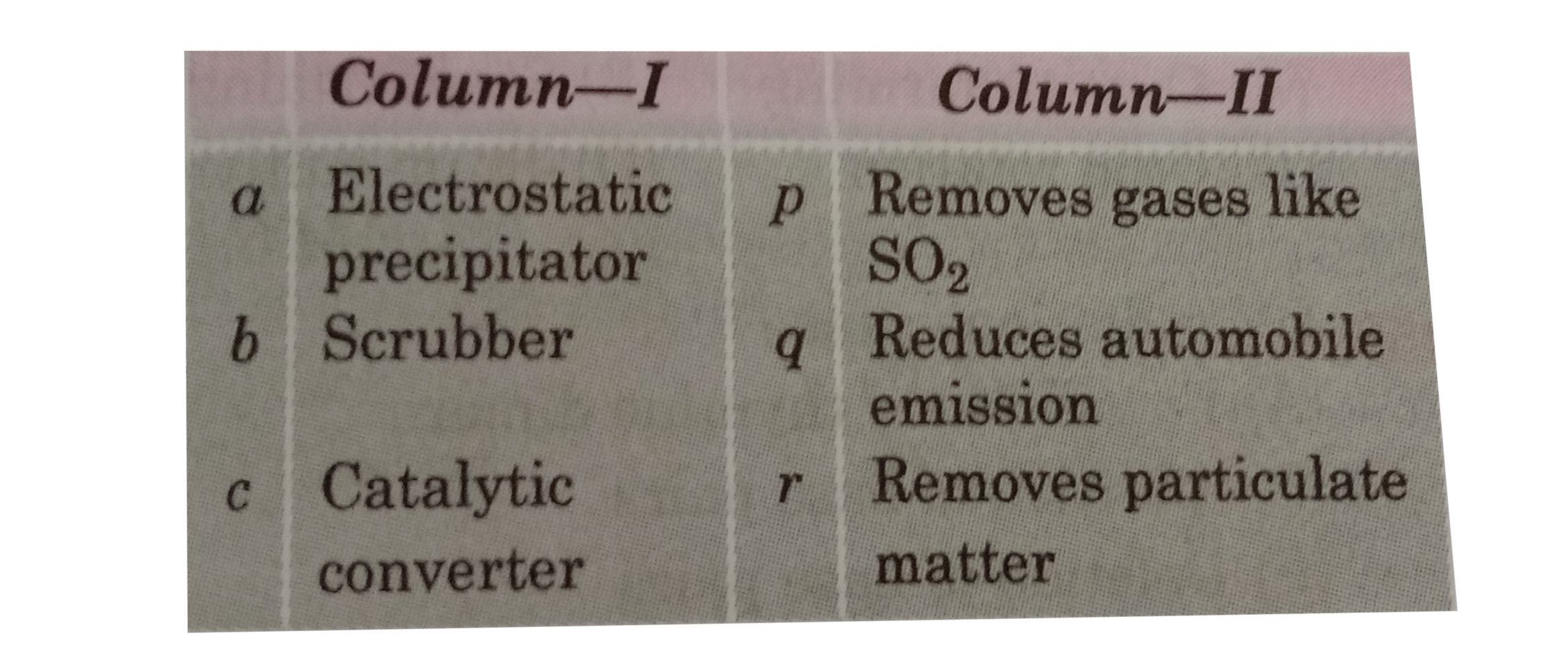Match the following and select the correct combination.
Column IColumn IIA.Red algae(i)MarchantiaB.Liver wort(ii)PinusC.Walking fern(iii)PolysiphoniaD.Gymnosperm(iv)Adiantum
A-(i), B-(ii), C-(iv), D-(ii)
A-(ii), B-(iv), C-(iii), D-(i)
A-(ii), B-(iii), C-(i), D-(iv)
A-(iii), B-(i), C-(iv), D-(ii)
The correct Answer is:D
To solve the matching question, we will analyze each item in Column I and find the corresponding item in Column II.
1. Identify Red Algae:
- Column I lists "Red algae" as option A.
- In Column II, we look for an example of red algae. The only option that fits is "Polysiphonia" (ii), which is known to be a type of red algae.
- Match: A - (ii) Polysiphonia
2. Identify Liverwort:
- Column I lists "Liverwort" as option B.
- In Column II, we need to find an example of a liverwort. The correct match here is "Marchantia" (i), which is a well-known liverwort.
- Match: B - (i) Marchantia
3. Identify Walking Fern:
- Column I lists "Walking fern" as option C.
- In Column II, the corresponding example is "Adiantum" (iv), which is commonly referred to as a walking fern due to its growth pattern.
- Match: C - (iv) Adiantum
4. Identify Gymnosperm:
- Column I lists "Gymnosperm" as option D.
- In Column II, the example that fits is "Pinus" (iii), which is a well-known gymnosperm that produces cones.
- Match: D - (iii) Pinus
Final Combinations:
- A - (ii) Polysiphonia
- B - (i) Marchantia
- C - (iv) Adiantum
- D - (iii) Pinus
Correct Combination:
The correct combination is:
- A - (ii)
- B - (i)
- C - (iv)
- D - (iii)
- Column I lists "Red algae" as option A.
- In Column II, we look for an example of red algae. The only option that fits is "Polysiphonia" (ii), which is known to be a type of red algae.
- Match: A - (ii) Polysiphonia
- Column I lists "Liverwort" as option B.
- In Column II, we need to find an example of a liverwort. The correct match here is "Marchantia" (i), which is a well-known liverwort.
- Match: B - (i) Marchantia
- Column I lists "Walking fern" as option C.
- In Column II, the corresponding example is "Adiantum" (iv), which is commonly referred to as a walking fern due to its growth pattern.
- Match: C - (iv) Adiantum
- Column I lists "Gymnosperm" as option D.
- In Column II, the example that fits is "Pinus" (iii), which is a well-known gymnosperm that produces cones.
- Match: D - (iii) Pinus
- A - (ii) Polysiphonia
- B - (i) Marchantia
- C - (iv) Adiantum
- D - (iii) Pinus
The correct combination is:
- A - (ii)
- B - (i)
- C - (iv)
- D - (iii)
Similar Questions
Match the items of column I and Column II and select the correct combination

View SolutionMatch column I (crop) with column II (corresponding disease resistant variety) and select the correct option from the given codes.
Column IColumn IIA.Cowpea(i)HimgiriB.Wheat(ii)Pusa komalC.Chilli(iii)Pusa SadabaharD.Brassica(iv)Pusa Swarnima
View Solution
Knowledge Check
Match column I with column II and select the correct option from the codes given below.
Column IColumn IIA.RBC(i)CoagulationB.Antibody(ii)ImmunityC.Platelets(iii)ContractionD.Systole(iv)Gas transpot(v)HypertensionAA-(v),B-(i),C-(iv),D-(iii)BA-(ii),B-(iv),C-(iii),D-(i)CA-(iv),B-(ii),C-(i),D-(iii)DA-(iii),B-(v),C-(ii),D-(iv)
Match the following and choose the correct combination from the option given
Column IColumn IIa.Sulphuri.Chlorophyllb.zincii.Nitrogenasec.Magnesiumiii.Methionined.Molybdenumiv.Auxin
View SolutionMatch the columns and select the correct option.
ColumnIColumnIIA.Octopus(i)LimbsB.Crocodile(ii)Comb platesC.Catla(iii)ArmsD.Ctenoplane(iv)Fins
View SolutionMatch column I with column II for housefly classification and select the correct option using the codes given below
Column IColumn IIA.Family(i)DipteraB.Order(ii)ArthropodaC.Class(iii)MuscidaeD.Phylum(iv)Insecta
View SolutionMatch column I with column II and select the correct option from the given codes.
Column IColumn IIA.Ammocoete larva(i)Sea horseB.Crocodiles(ii)PenguinC.Fish(iii)LampreyD.Bird(iv)Reptilia ("E.","Mammal","(iv)","Bat"):}
View SolutionMatch column I with column II and select the correct answer from the given codes.
Column IColumn IIA.Wax(i)Interspecific hybridisationB.Pollinator(ii)MicropopagationC.Mule(iii)BeeD.Tissue culture(iv)Apiculture
View SolutionMatch column I with column II and select the correct option from the codes given below.
Column IColumn IIA.Planaria(i)Binary fissionB.Fungi(ii)Asexual sporesC.Yeast(iii)BuddingD.Amoeba(iv)True regeneration(v)Fragmentation
View SolutionMatch column I with column II and select the correct option from the given codes.
Column IColumn IIA.Protochordata(i)DelphinusB.Limbless amphibia(ii)MyxineC.Oviparous mammal(iii)OrnithorhynchusD.Aquatic mammal(iv)DoliolumE.Jawless vertebrate(v)Ichthyophis
View Solution